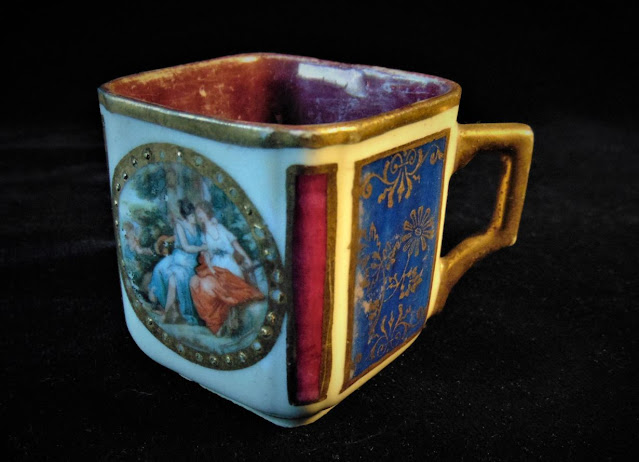The actually existing personal belongings of Rosemarie Zangers father, Günther Klinge, conserved in the CID Institute Museum collection, include letters of the private correspondence between Günther, who served as Lieutenant in the German Wehrmacht in Russia, his wife Maria Klinge-Weil and his daughter Rosemarie living in Emmershausen, a photographic collection of Günther Klinge from the years 1941/42 from Russia on paper prints and film negatives, personal objects and official documents.
Dried flowers from Ucrainia collected by Günther Klinge
and stored in his LANDE MOKRI SUPERB Cigarrette Carton Box
with a personal dedication to his wife or daughter from 17th April 1942
The GÜNTHER KLINGE PHOTOGRAPHIC COLLECTION
from German Wehrmacht Military Campaign in Poland and Russia / Ucrainia until July 1942
The photography collection is preserved inside a metal Hannover Bahlsen Bisquit box and includes paper print photographies and 4.2 x 5.4 cms negatives, some stored inside an envelope from Th. Reusch Photoshop in Usingen.
The photographies date mostly in 1941. Some carry on their back date entries and notes some in the personal handwriting of Günther Klinge. Accompanied by a map on a newspaper extract that shows an advance course over Cracow and Kiew towards Krasnograd south of Charcow, it can be supposed, that the pictures show the advance of german troops from the Catowicz Region in Poland through the Central Ucrainia until the Dnieper Lowlands south of Charcow.
The photography collection contains as well as portrait pictures of Günther Klinge as also sociable military group photographies of german troops and landscape and ethnological photographies of the native population. In combination with analysis of data from Günther Klinge´s diaries it can be deduced, that the german Wehrmacht advanced in an area with partially german settlements, where they where friendly received but also entered repeatedly in conflict with alien forces designated as "Russians" or "The Enemy".
Road map with supposed advance way of Günther Klinge during his 1941-42 East Europe voyage in military company
29.6.1941 Zariwgrad ?
(The G. Klinge Diary mentions for 29.6.41 stops at Zagrodki and Zarnogrod)
Untiteled
3.7.1941 Radzienkow
(The G.K. Diary mentions for 3.7.41 stops at Witkow and Radzienko. The site might be Radzionkow near Tarnowitz north of Catowice. This is also coincident with the map registry that mentions the station Tarnow)
Untiteled
9.8.1941 Ailom
Garnoskaipol 25. - 28.8.1941
25. . 28.8.1941
Untiteled
Untiteled
Garnoskaipol 25.-28.8.1941 Prisoners "Kurnovanpool"
Dnjepr -Crossing 28.8.1941
30.8.1941 ...... Osslitki
(The picture might show the SAMARA River crossing northeast of Dnjepropetrowsk)
31.8.-1.9.41 near Osslitki
With illegible dedication ... Günther 1941
Handwritten War-Diary of Günther Klinge
excerpt from 16.7.1941
with machine-written transcription.
The Diary on single paper leafs covers the time 17.5. until 13.9.1941
Post-Card to his Wife Maria Klinge in Emmershausen
sent for Pentecost Festivities at 27.4.1942
Günther Klinges 1940 Note Book
with excerpt from 5. November 1940.
The Diary mentions stages in France during german military campaign and return to home for Christmas and New Year with a family-travel to Black Forest
Günther Klinges 1941 Note Book
with excerpt from 29th June until 5th July 1941
The Diary mentions stages in Poland and Russia during german military campaign and return to home for Christmas with a family-travel to Black Forest and return to War Scenery at 27th Dec. 1941
Günther Klinge´s 1942 Note Book
with excerpt from 2nd and 3rd July 1942 (last entry).
The Diary mentions stages at Croatia 25.1.,Budapest 26.1., Dorna Watra (Vatra Dornei, Romania) 30.1., Cernovitz 31.1., Lemberg 4.2., Novomirgrod (Novomyrhorod, Ucrainia) 23.2., Kriwoj Rog (Krywyj Rih, Ucrainia) 6.3., Paraskowaja (Bereka ? / Ucrainia) 16.5.. between a lot more difficult to decipher.
At 1.5. the site name Birki indicates an approach from South towards City of Charkow, mentioned itself at 3.5.1942. At 26.6. the site name Krasnij Yar appears, at 30. June 1942 the site name Borissowka, written again at 3.7.1942 as "Prinzowka". The Diary ends that same day.




















































































